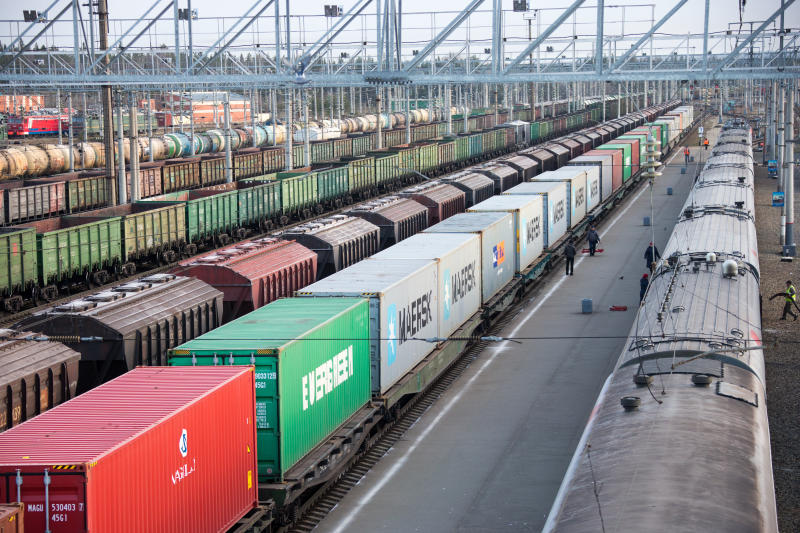INSTC: Eurasia’s inclusive connectivity corridor
In
Log in if you are already registered
The International North-South Transport Corridor (INSTC) is a Russia backed multi-modal transportation project which envisions seamless connectivity between Russia and countries in Asia, and potentially even Polar Regions in a single trade and transport network. Some even refer the INSTC as Russia’s precursor to China’s BRI (Belt and Road Initiative) and a reflection of aspiration for access to the Persian Gulf.

The INSTC project began with signing of an agreement in 2002 between Russia, India and Iran, with the objective of building transportation networks to connect these countries with Central Asia and European markets. The INSTC membership has gradually expanded to include several other countries, namely Azerbaijan, Armenia, Kazakhstan, Kyrgyzstan, Tajikistan, Turkey, Syria, Belarus and Oman.
One of the biggest advantages of INSTC is considerable reduction in transportation cost and transit time between Russia and India. An added advantage is that that INSTC would facilitate trade among Russia, South Asia, Europe as well as Central Asia, bypassing the troubled Afghanistan-Pakistan region.
Iranian rail link between Chabahar Port and Zahedan, capital of Sistan and Baluchistan Province, is considered a key element of this corridor for linking Central Asia with Iran. Chabahar is 700 km away from Zahedan and 950 km from Milak, the closest city to the Afghan border, and 1,827 km away from Sarakhs on the Turkmen border. The marine distance to Dubai is 353 nautical miles, and to Mumbai is 843 nautical miles.
India is playing pivotal role in developing the port of Chabahar. Russia is also interested in investing in the Chabahar Port. This route is estimated to reduce by 60 percent the shipment costs and by 50 percent the shipment time between India and Central Asia.
Since its inception, the INSTC project saw many ups and downs. The sanctions on Iran that whittled INSTC’s growth. However, in the last one-year INSTC has played a major role in boosting India-Russia trade.
Meanwhile, China has been pushing its BRI with the help of Pakistan and trying to entice some Central Asian countries to utilize China Pakistan Economic Corridor (BRI’s flagship project). Pakistan’s China funded deep sea port at Gwadar, which is located merely 72 km east of Chabahar, is seen as a counterbalance to the Chabahar Port. Gwadar port is a critical component of the China-Pakistan Economic Corridor (CPEC). China might, in future, also seek to use the port in Gwadar as a military base.
China, together with Pakistan and Afghanistan, is trying hard in linking Central Asian countries with BRI, particularly in the realization of the Trans-Afghan rail line project involving Uzbekistan, Afghanistan and Pakistan which is seen as an extension of CPEC. At present, the project seems to be delayed inordinately due to many apprehensions of the stakeholders in Central Asia.
The reason behind Central Asian countries being extremely motivated to be involved in the BRI is their need for financial resources for development, besides that they, being land-locked, have no access to sea to develop trade. Since the Ukraine, the Central Asian states are trying to open various connectivity corridors including INSTC and Chabahar Port. Moreover, with the US reevaluating its options and role in the region following its withdrawal from Afghanistan, China now has a greater opportunity to increase its footprint. China is nudging all the Central Asian countries to use Af-Pak corridor and the Karachi port to access the sea. The Trans-Afghan Railway is one such imitative to lean towards China sponsored economic activities. China also used the recently held China-Central Asia Summit to push its BRI agenda. It sought to promote integration and construction activities in Central Asian countries under the BRI umbrella.
Even as Russia is trying to signal to China that it was supportive of BRI it remains to be seen how Russia would deal with China’s moves to increase its footprint and wean Central Asian countries towards Beijing backed connectivity projects. Russia would like to maintain its pre-eminent role in Central Asia.
Dipanjan Roy Chaudhury, Diplomatic Affairs Editor, The Economic Times, India is a guest author for RIAC.
Diplomatic Affairs Editor, The Economic Times
Blog: Dipanjan Roy Chaudhury's Blog
Rating: 0




